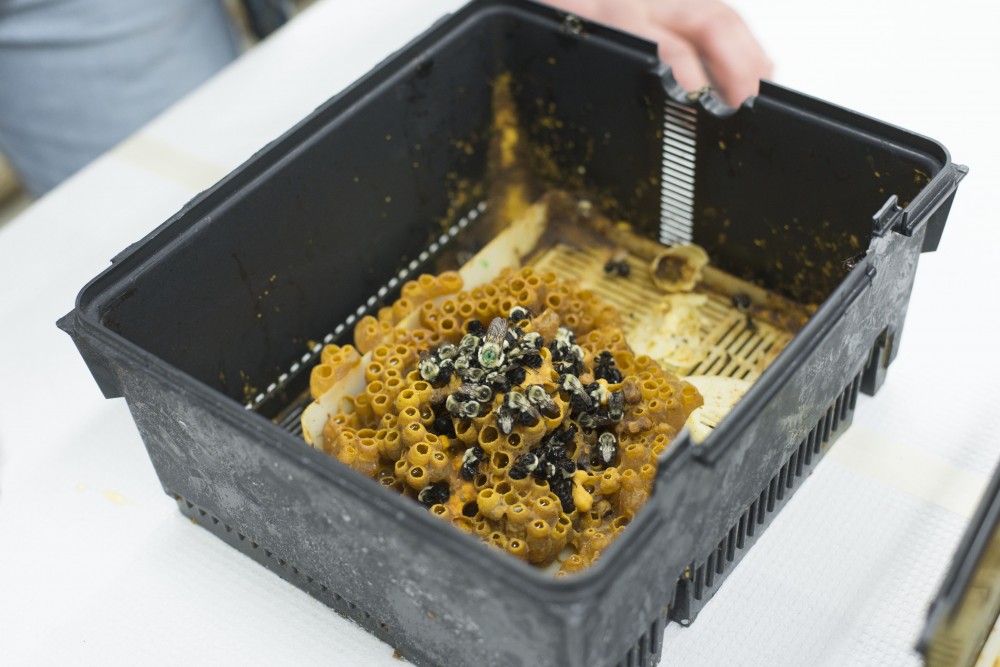Initiatives to conserve Minnesota’s pollinator population are being rolled out locally and statewide.
Pollinators, including types of bees and other insects, have been declining in recent years, officials say. But efforts are underway at the University of Minnesota and the Minnesota Legislature to find ways to protect the communities and create awareness.
Bill trying to make a sting in the Legislature
As public awareness around the decline of bees increases statewide, initiatives are emerging out of the Legislature to protect pollinators.
A bill going through the Minnesota House this session would give some larger cities in Minnesota, including Minneapolis and St. Paul, more control over the regulation of pesticides, delegating some of the control that is usually held by the state. Similar bills introduced in the House haven’t made it this far before.
The bill was presented at an agricultural and food finance committee meeting earlier this month and will be discussed on the House floor within the next few weeks, said Rep. Rick Hansen, DFL-St. Paul.
“I felt that we needed to spur some changes. If statewide law can’t protect pollinators, lets see what cities can do,” Hansen said.
The bill would allow certain cities to tighten regulations on pesticides that are harmful to pollinators.
“These cities could become a refuge to pollinators,” said Rep. Jean Wagenius, DFL-Minneapolis.
The population of some kinds of bees have declined because of the use of neonicotinoid insecticides, a type of pesticide used to protect plants and trees from insects and is known to be harmful to certain pollinators.
When some bees come in contact with neonicotinoids, their nervous systems shut down, making them unable to do their jobs, said Vera Krischik, a University entomology professor who researches the effects of the pesticide on bee populations. This contact eventually kills off a bee colony, she said.
Krischik said the proposed policies are a balanced approach to protecting pollinators because they don’t deny people the ability to use pesticides. There are other kinds of chemicals that are friendly to pollinators, but are more costly and take more education to know how to use them, she added.
“All the researchers say we can’t get rid of [neonicotinoids], but we should regulate it,” Krischik said.

Raising awareness, research at the University
The University’s Institute on the Environment hosted a panel earlier this month to talk about the decline in pollinator populations.
Researchers, students and community members gathered on the St. Paul campus to hear from experts and discuss how land around the state can help conservation efforts.
Eric Lonsdorf, a researcher in IonE who moderated the panel, said he hopes having more conversations around pollinators will create awareness of these topics.
“To have a future with pollinators, it is going to take knowledge, engagement and education,” Lonsdorf said.
Along with public discussions, many University faculty members conduct research in this area. Part of the effort to restore declining bee populations includes considering the creation of supportive habitats.
Daniel Cariveau, head of the University’s Cariveau Native Bee Lab, is working on a project to analyze how surrounding landscapes and different pollinator-friendly plants affect bee populations.
Project researchers will be working on plots of land in southwest Minnesota over the summer to study how the health and function of bees are affected by these conservation landscapes.
Cariveau said they’re curious how habitats affect bee communities and how they could save wild bees.
The results will be used to make recommendations for planting pollinator-friendly habitats.









